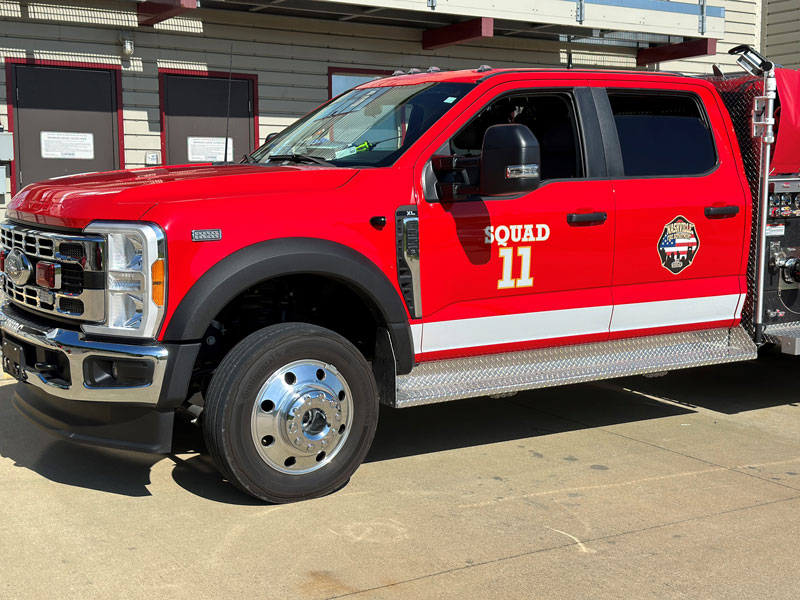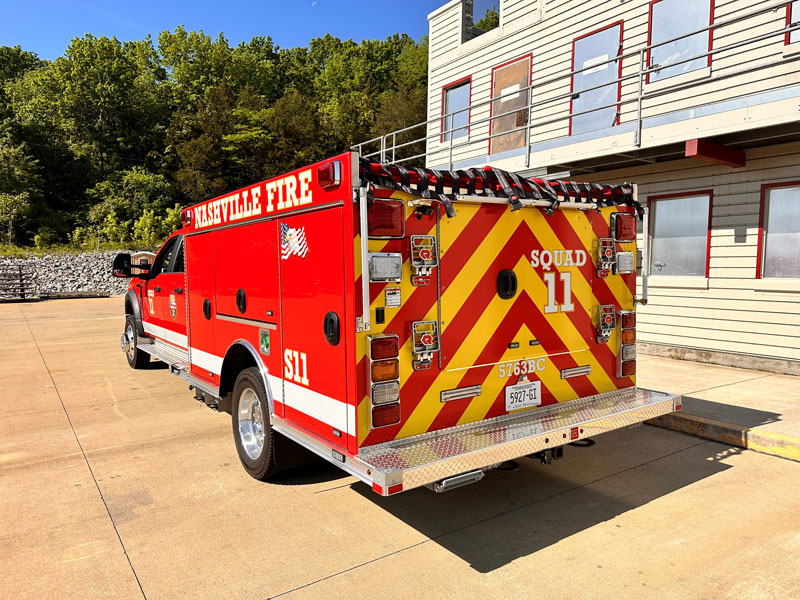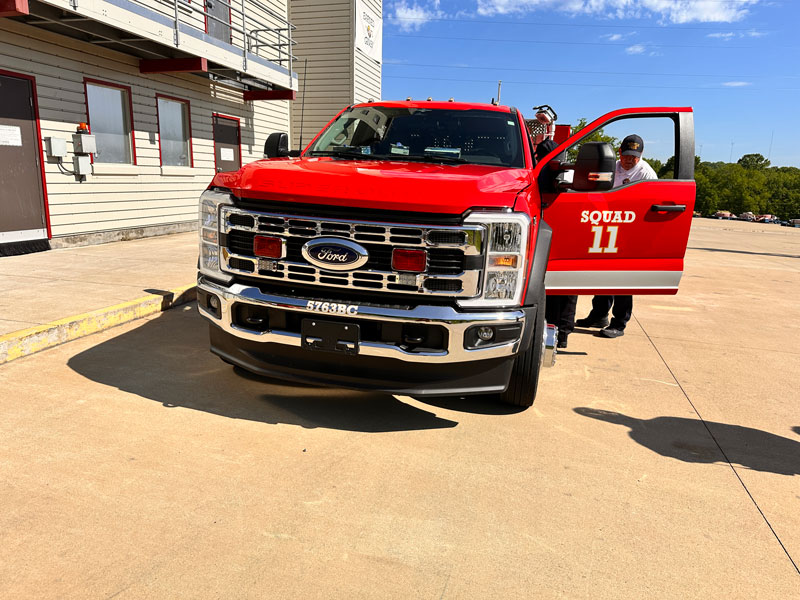
The Nashville (TN) Fire Department has added eight new squad response vehicles to its fleet of apparatus to provide enhanced services in the Metro Nashville-Davidson County area that it covers and also reduce the wear and tear on its pumpers and tractor drawn aerials.
William Swann, Nashville Fire Department director chief, says the department has 150,000 runs a year and had been running emergency medical services (EMS) calls with its pumpers and tillers, but that the new squads will run in place of the heavier trucks for EMS response, carbon monoxide detection, elevator rescue, and light rescue in densely populated, tight areas. “We implemented the program is a staggered fashion starting this past January,” Swann points out, “and have seen a 50% reduction in wear and tear on our larger apparatus.”

He notes that the department has a total of 40 stations, so seven of the eight squads were placed at strategic locations where the department has the heaviest number of runs, while the eighth squad is used for training. “The other issue of going with the squads is the difference in cost between them and the larger apparatus,” Swann says. “We can get a squad for about $260,000, instead of spending $1.5 million or more for an aerial.”
Joe Davis, apparatus sales manager for NAFECO, who sold the squads to Nashville, says the squads are all identical, built on Ford F-550 4×4 chassis with a four person crew cab and a Rosenbauer body, powered by a 330-horsepower (hp) 6.7-liter Power Stroke diesel engine. “Nashville wanted the rigs to have fire suppression, rescue and EMS capabilities,” Davis says, “so each of the squads has an Enforcer 30 compressed air foam system (CAFS) with a hose reel and nozzle on a slide-out in the rear compartment, a side mount manifold with a four-inch inlet, and two crosslays each with 200 feet of 1-3/4-inch hose.”

Tim Henderson, Nashville Fire Department deputy director chief, says the squads also carry 500 feet of 4-inch large diameter hose (LDH), an AMKUS Rescue Systems ION® battery-powered spreader and cutter, self-contained breathing apparatus (SCBA) packs, a carbon monoxide detector, forcible entry hand tools, EMS bags, oxygen cylinders, and a defibrillator. “Because of their smaller size and 7-foot clearance, we are able to take the squads into parking structures to assist with parking garage fires,” Henderson observes.
Davis adds that each rig has fully customized shelving, with the L1/R1 compartment being transverse with slide-out trays. Lighting on the squads, he says, includes Federal Signal LED emergency lighting, and two Akron Brass LED scene lights on telescoping poles.

ALAN M. PETRILLO is a Tucson, Arizona-based journalist, the author of three novels and five nonfiction books, and a member of the Fire Apparatus & Emergency Equipment Editorial Advisory Board. He served 22 years with the Verdoy (NY) Fire Department, including in the position of chief.

